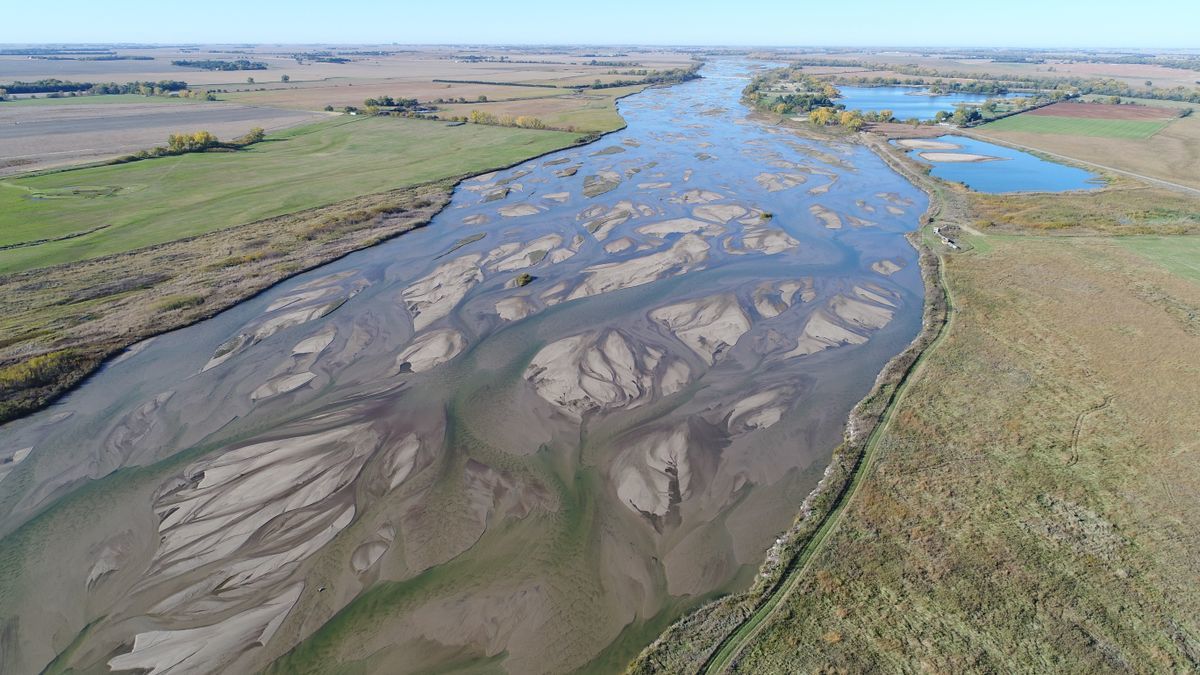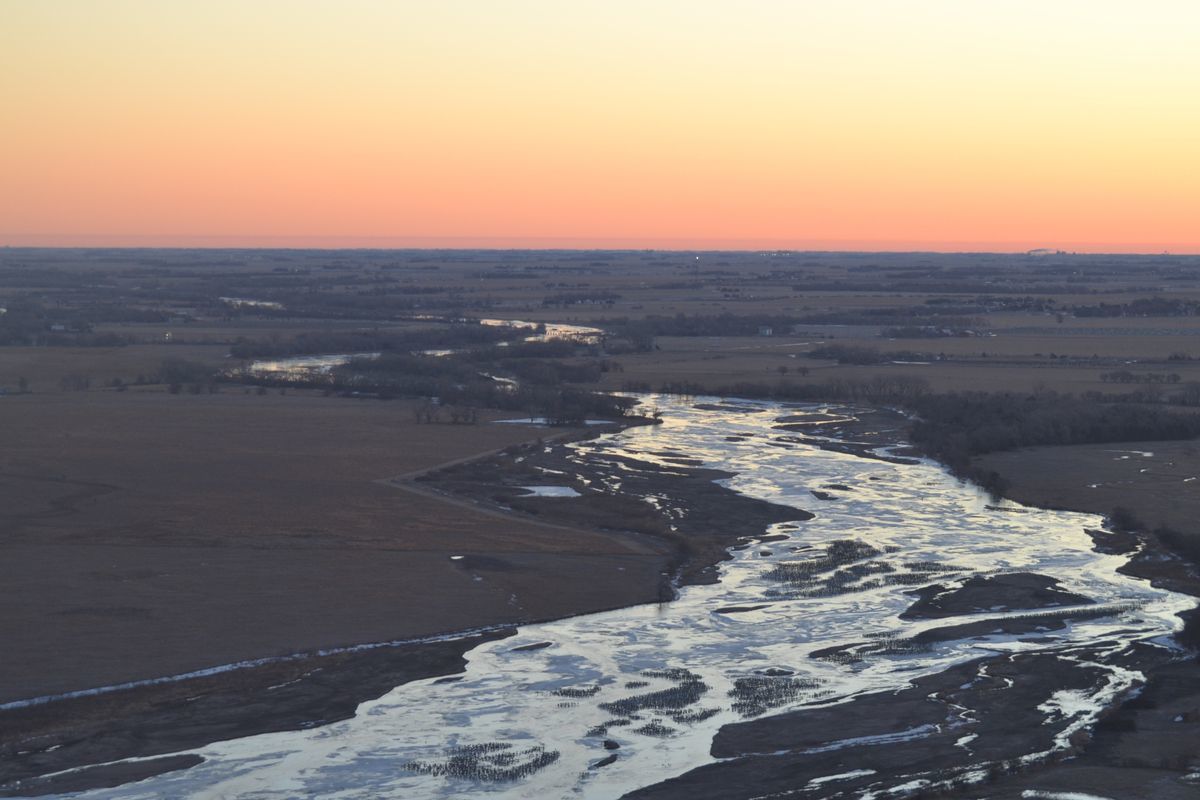The Platte River is Nebraska’s longest and perhaps most important river. The North Platte River from Wyoming and South Platte River from Colorado drain snowmelt from the Rocky Mountains and converge in western Nebraska as the beginning of the 311 mile Platte River. Several of Nebraska’s other rivers feed into the Platte River, establishing the Platte River as main tributary of the Missouri River. The channel morphology of the Platte River is considered a model of braided river system and used to understand these types of rivers around the world.
A braided river is a wide, shallow river composed of ever-changing alluvial islands (bars) and several channels that branch and rejoin. Characteristically, these rivers form from steep source waters with high water flows that carry large sediment loads of sand and gravel along the river’s bed. Braided river valleys are often several miles wide with river banks that are erodible and add more sediment to the system. Island material is picked up (eroded) from the upstream portion of the sandbars and deposited at the tail of the islands, allowing the sediment to move down stream and sandbars to constantly be eroded away and rebuilt further downstream. The features of braided rivers are maintained by seasonal flooding and ice jam events, which clear the islands of vegetation that can stabilize the islands. Lowland areas adjacent to braided rivers are often comprised of sedge dominated wet meadow systems that experience frequent flooding and groundwater dependent sloughs. Anastomosed rivers are similar to braided rivers, but have deeper permanent channels that branch and rejoin, more stable river banks, and established vegetated islands as opposed to shifting sandbars.
Once thought by settlers as “a mile wide and an inch deep”, the Platte River has undergone drastic changes since the mid-1800s. Industrialization and agriculture have altered the river’s hydrologic processes and continue to change the channel morphology of a braided river system. Damming and establishment of large water reservoirs along the Platte River and its tributaries has had the biggest impact on the river. The natural cycles of flooding, high flow rates and sediment transport are altered from the damming process. Massive flooding events, flow rates, and severity of seasonal ice jams are reduced as the water flow in the river is controlled at the dams. Sediment for sandbar formation is restricted from the river as it cannot travel past dams. In addition, sediment additions from erosion have decreased as flooding events and ice jams become less common. Large scale use of groundwater irrigation for agriculture also drops the water table and surface water in the Platte River, further restricting flow rate.
All of these factors contribute to the recognizable changes in the Platte River. Sandbars become stabilized by vegetation allowed to establish in the absence of flooding, reduced flows, and ice jams that would have washed away or scoured off vegetation. As these sandbar islands become vegetated, further sediment flow is restricted and the sandbars will eventually establish permanence as an island. Tree establishment along the river has increased as a result of this same process, stabilizing the river banks and altering the open habitat that would have been maintained through seasonal flooding and ice scouring. As sandbars and banks are stabilized, water flow is restricted to channels in the river, narrowing the width of the river and deepening the river bed in those channels. These alterations lead to river morphology more similar to an anastomosed river, as sandbar development no longer occurs.
This phenomenon has been observed in braided river systems around the world, proposing the question of whether braided rivers should be considered as an endangered river system. As a proponent to this notion, a myriad of endangered species, especially birds, throughout the world have dependent relationships with braided river ecology. On the Platte River the Whooping Crane, Piping Plover, Least Tern, and pallid sturgeon contribute to the list of endangered species dependent on habitats provided by braided rivers. Whooping Cranes rely on shallow, open sandbars in wide rivers for protection during night roosting as they migrate through the central Nebraska. The Least Tern and Piping Plover both nest on unvegetated sandbars that flooding and ice jams maintained throughout the Platte River. Other species, though not federally protected, also rely on the habitat provided in this braided river system.
The Whooping Crane, Least Tern, and Piping Plover continue to be core species driving habitat and river maintenance on the Crane Trust properties. Recognizing the effects of hydrologic change on the Platte River has inspired several management practices that preserve necessary components of braided rivers. Vegetation is actively removed from sandbars by mechanical means of disking to open nesting habitat and decrease the stability that can lead to permanent island formation. Stands of trees along riverbanks are also cleared to decrease water uptake, promote natural erosion along river banks, and reduce sediment accumulation. We also actively manage for invasive plant species, like common reed and purple loosestrife, and woody encroachment of eastern red cedar, Russian olive, and willows through chemical applications and controlled burns, promoting native plant species and maintain open tallgrass prairie and wet meadow habitat on our properties adjacent to the river.
Joshua Wiese and Andrew Caven





